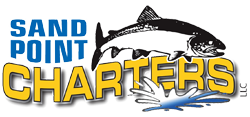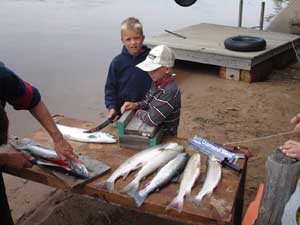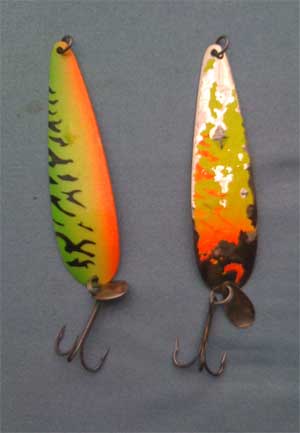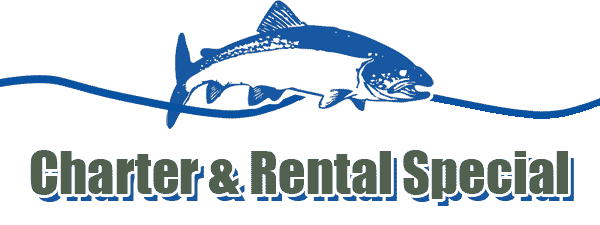Lakers, as we call them, live in cold water from 40 to 52 degrees Farenheit. Generally they stay on the bottom, but will sometimes be found suspended when the water temp is at their preferred temperature. In the winter, under the ice they will usually be right on the bottom. Also, in the mid-summer, after the water warms up, they will again be on the bottom. But in the spring after the ice goes, until mid-summer when the water warms up past the 50 degree mark they can be found suspended anywhere in the water column.
Lakers feed more in the mid-morning hours, but can be caught all day long by jigging, trolling or casting. Leaded jigs with a piece of artificial or real bait attached, and jigged on the bottom catches lot of lake trout.
For trolling, a herring dodger with a fly with a bait rig or small spoon works well at slow speeds. (from .8 mph up to 2 mph, with the lower end preferred) Smaller, lighter spoons with a good fluttering action at slow speeds work very well. I like the Silver Streak, (Jr. Streak) or the Laker Taker Flutter lures. Another good choice is the Sutton line of spoons. Larger, heavier spoons do not work as well since they tend to loose their attractive action at slow speeds. See youtube video and lure testing tank for more info.
Lake Trout prefer slow acting, slow moving prey, especially the larger lake trout. They eat insect larvae, opossum shrimp, small crustaceans, zooplankton, snails, leeches, mice, shrews, clams and smaller fish like lake herring, smelt and alewives.
Lake Trout like to hang around some kind of structure when on the bottom. Look for “humps” with your depth finder in the 80 to 150 foot deep range with deeper water all around and you will usually find lake trout by trolling over it several times with your lure as close to the bottom as possible. I even drag the bottom sometimes with my downrigger ball, just to be sure I am there. Of course there is a risk of snagging, but it’s a risk worth taking, especially in an area that is known to be sand or clay bottom.
If the bottom is rocky with LOTS of structure, jigging is a safer, often more productive way to go. Dragging downrigger balls or weighted trolling lines is too risky.
In the fall, during the spawning, you will find them in shallow water where the bottom is rocky. At this time they are very aggressive and easy to catch since they are very protective of their spawning grounds. Any method will work, as long as you find the spawning ground and they return year after year to the same places.
Their meat varies in color and texture by the food they eat and their species. There are several species of lake trout in Lake Superior. Lean Lake Trout that we call red fins or natives, Siscowet Lake Trout that we call fats.
For a very interesting and informative study on what temperatures and how deep lake trout go, see this report: http://www.glifwc.org/Reports/LakeTroutDepth&Temp04-01.pdf



 Brian Helminen
Brian Helminen

